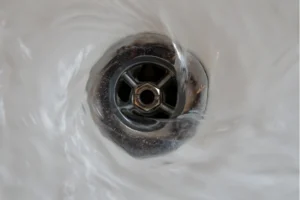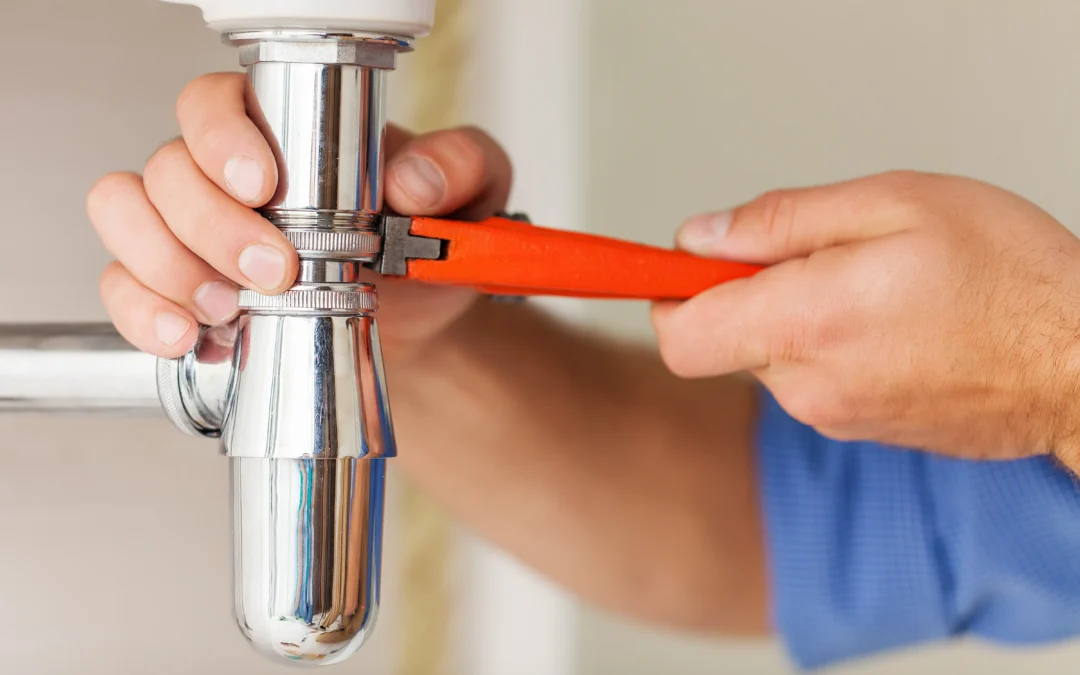For all new homeowners, one crucial aspect of owning a home is ensuring your plumbing system works efficiently. Knowing your new home’s plumbing is the first key to preventing problems. As you can imagine, plumbing problems can cause major headaches and inconvenience for everyone in the house. So, let’s prevent that from happening by reading our essential plumbing tips for new homeowners below.
Know Your Plumbing System Basics
Locate The Main Water Shut-Off Valve
The first thing you need to know about plumbing, as a new homeowner, is the location of the main water shut-off valve. This is the control for the home’s water supply. So, in case of emergencies like leaks or burst pipes, you know where to go to stop the issue temporarily.

Typically, the main water shut-off valve is located near where the main water line enters the home. This can be found in the basement, the garage, or near the exterior walls. The water shut-off valve is usually a wheel-shaped handle or a lever handle.
Learn Where Your Water Meter and Water Heater Are
Next, you need to find where the water meter and your water heater are. As the name suggests, the water meter monitors water usage. They’re usually located in a box near the curb, covered by a metal or plastic lid, or, if you live in a colder climate, the water meter might be located inside, such as in the basement.
A water heater, on the other hand, is commonly found in the basement, garage, or utility closet. Water heaters come in different forms, depending on the type. For example, a tank-style heater is usually cylindrical, while a tankless model is wall-mounted.
Prevent Plumbing Emergencies Before They Happen
Check For Leaks Early
Once you know where the essential plumbing systems are located, make sure they’re in good condition to prevent costly problems. First, check for leaks. There are a couple of ways to do this. Turn off all water (including appliances that use water, like the faucet), then check the water meter to see if it has stopped running. If it’s still running, you likely have a leak.
In addition, undergo a visual inspection and check damp spots, water stains, or mold under sinks, around toilets, and near appliances. If you see some spots, there may be a leak. Call in a professional to fix the leak early to prevent the issue from becoming more complex.
Protect Your Pipes
 Pipe issues, such as bursts or floods, can result in costly repairs. To keep your plumbing safe, insulate pipes with foam sleeves or heat tape, especially in unheated areas like basements or garages, to prevent freezing during winter. Before cold weather hits, disconnect outdoor hoses, turn off and drain exterior faucets, and consider shutting off the valves to avoid frozen pipes. To prevent clogs, never pour grease, oil, or food scraps down drains, and install drain strainers to catch hair, soap residue, or other debris before they build up and block your pipes.
Pipe issues, such as bursts or floods, can result in costly repairs. To keep your plumbing safe, insulate pipes with foam sleeves or heat tape, especially in unheated areas like basements or garages, to prevent freezing during winter. Before cold weather hits, disconnect outdoor hoses, turn off and drain exterior faucets, and consider shutting off the valves to avoid frozen pipes. To prevent clogs, never pour grease, oil, or food scraps down drains, and install drain strainers to catch hair, soap residue, or other debris before they build up and block your pipes.
Be Mindful Of What Goes In The Toilet
You don’t want your toilet to clog, and the best way to prevent that is to control what goes down it. Some things, such as paper towels, medications, chemicals, and cotton balls, appear safe to flush. However, avoid tossing them because they can cause an obstruction and eventually clog it. Make sure everyone, especially guests and children, understands what should and should not be flushed.
Maintenance Habits Every Homeowner Should Build
Test Water Pressure
High water pressure can stress the pipes and eventually damage them. Use a pressure gauge to test that you have the appropriate water pressure. Your water pressure should not exceed 80 psi. If you discover that your home’s water pressure is excessively high, call a plumber to install a pressure regulator to keep it under control.
Flush and Maintain Your Water Heater
Over time, your water heater will develop sediment, such as calcium, which can lead to rust inside the tank. When this occurs, it not only harms the water heater but also impairs the quality of the water you use in your house. To keep it in good condition, flush your water heater at least once a year, or more frequently if you have hard water. Flushing the water helps prevent system damage, improving efficiency and longevity.
Clean Drains Safely
 Maintaining clean drains is essential to preventing clogs and further pipe damage. Clean your drains safely by adding ½ cup of baking soda, ½ cup white vinegar, and flushing with hot water to break down organic waste. For stubborn clogs, use a manual drain snake (available at hardware stores) to remove hair or debris. Avoid using aggressive products, which can corrode pipes and damage septic systems.
Maintaining clean drains is essential to preventing clogs and further pipe damage. Clean your drains safely by adding ½ cup of baking soda, ½ cup white vinegar, and flushing with hot water to break down organic waste. For stubborn clogs, use a manual drain snake (available at hardware stores) to remove hair or debris. Avoid using aggressive products, which can corrode pipes and damage septic systems.
When To Call A Professional Plumber
Some plumbing maintenance and repairs can be completed safely by yourself. Cleaning the drains, draining the water heater, and monitoring the water pressure are all simple tasks that you can do on your own. However, for more complex issues such as frozen or burst pipes, leaks that you can’t find or repair, and problems with water heater components, it’s best to leave it to the expert. To efficiently fix any of these problems, specific knowledge and skills, as well as the proper and safe tools, are required. Attempting to undertake these types of repairs on your own can be extremely dangerous.

As a new homeowner, you must pay close attention to the plumbing system to ensure the safety and convenience of your home and its occupants. Our essential plumbing tips cover what homeowners should and should not do with their plumbing system to keep it in good working order and avoid problems. If you have plumbing issues and don’t know where to start or how to fix them, call Johnson’s Heating for a prompt, competent solution. Do not wait for the problem to get more complex. Let our team check it now and solve it as soon as possible.




Recent Comments